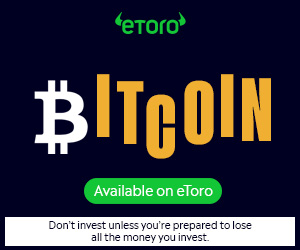Ethereum tokens have become one of the most foundational elements in the broader blockchain ecosystem, enabling a wide range of applications from decentralised finance (DeFi) to gaming, governance, etc. However, for many, especially those new to the space, the terminology and technical structure surrounding these tokens can be confusing. Acronyms like ERC-20, ERC-721, and ERC-1155 often appear complex, and the difference between coins and tokens is not always clear. Beginners often find themselves lost in industry-specific definitions and fragmented information, while more experienced users may seek a clearer understanding of token standards and their practical implications.
Ethereum, launched in 2015 by Vitalik Buterin, introduced the concept of smart contracts to blockchain technology. These self-executing contracts allow developers to build decentralised applications (dApps) on top of the Ethereum network. Today, Ethereum supports millions of tokens, with ERC-20 being the most widely adopted standard for fungible tokens used in DeFi protocols, stablecoins, and governance systems. Meanwhile, standards like ERC-721 and ERC-1155 have enabled the explosive growth of NFTs and blockchain-based gaming, with the NFT market alone boasting a market cap of over $3.9 billion.
Table of Contents
Despite this growth, there remains a gap in accessible, structured education about what Ethereum tokens are, how they function, and why they are critical to the blockchain ecosystem. This comprehensive Ethereum tokens guide aims to fill that knowledge void by presenting a thorough yet accessible breakdown. This article offers both a fundamental and in-depth understanding of Ethereum tokens, encouraging beginners and DeFi users to engage more confidently with the decentralised applications and innovations within the Ethereum ecosystem. Let’s get into the details.
What are Ethereum Tokens?
To understand Ethereum tokens, it is essential first to grasp the basic concept of Ethereum itself. As stated earlier, it was launched in 2015 as a decentralised, open-source blockchain designed to do more than simply transfer digital currency. Unlike Bitcoin, which primarily serves as a digital currency, Ethereum is a programmable blockchain created to support a wide range of applications, from financial services to gaming and virtual identity systems. This programmability opened the door to a wide range of use cases, including lending platforms, decentralised exchanges, games, identity systems, and digital art marketplaces. Within this flexible ecosystem, Ethereum tokens emerged as one of the most important innovations.
Meanwhile, let’s consider what a token actually stands for. In simple terms, a token is a custom asset that represents a unit of value or utility created on an existing blockchain. Unlike cryptocurrencies like BTC or ETH, which operate on their own native blockchains, tokens are built on top of existing networks (such as Ethereum). They can serve various purposes, including granting access to a service or representing anything of value, currency, ownership rights, access permissions, or digital collectibles, depending on their design and purpose.
Tokens on Ethereum follow specific technical standards that define their structure and behavior. The most widely used is ERC-20, which governs fungible tokens, assets that are identical (like how every dollar or coin of the same kind has the same value) and interchangeable, such as stablecoins (USDC) or governance tokens (UNI). Other standards include ERC-721, used for non-fungible tokens (NFTs) that represent unique items, and ERC-1155, which allows for both fungible and non-fungible tokens within a single smart contract, improving efficiency for complex use cases like gaming. The tokens built on Ethereum benefit from the network’s security, decentralisation, and composability, meaning they can interact seamlessly with other applications and smart contracts within the Ethereum ecosystem.
What is the Difference between Ethereum Tokens and Ethereum Coins?
While the terms are often used interchangeably, Ethereum tokens and Ethereum coins refer to two very different concepts within the blockchain’s network. Ether (ETH) is the native coin of the Ethereum blockchain. It is built into the protocol and is primarily used to pay for transaction fees, smart contract execution, and network operations, commonly referred to as “gas.” ETH functions similarly to Bitcoin (BTC), acting as both a store of value and a means of payment within the Ethereum network.
Ethereum tokens, by contrast, are digital assets created through smart contracts on the Ethereum platform. They are not part of the core blockchain protocol but are deployed using token standards such as ERC-20 (for fungible tokens) and ERC-721 or ERC-1155 (for non-fungible tokens). These tokens are created by other projects and developers using the blockchain's network, such as USDC (a popular stablecoin), Uniswap (a DeFi governance token), and CryptoKitties (an ERC-721 NFT). While they operate independently, they rely on ETH to pay for transaction fees.
From a technical standpoint, ETH is managed at the protocol level, whereas tokens follow smart contract-defined rules. For example, ERC-20 tokens follow a shared framework that make them work smoothly with wallets, exchanges, and DeFi apps. Instead of being recorded directly on the Ethereum blockchain, like ETH, token balances are managed by smart contracts that track ownership.
For participants in DeFi and NFT ecosystems, this distinction holds particular significance. While tokens serve as the core assets that enable functionality within most decentralised applications, Ether remains essential for executing transactions and interacting with these platforms. Confusing the two can lead to avoidable mistakes, such as failed transactions or using incompatible wallets.
The List of Common Token Standards on the Ethereum Blockchain
Ethereum’s versatility stems largely from its support of various token standards, predefined guidelines that govern how tokens behave and interact on the blockchain. They form the backbone of the network’s diverse ecosystem, facilitating everything from simple token transfers to complex decentralised applications. Below are the most common Ethereum token standards, each serving a specific purpose.
ERC-20
ERC-20 is the most widely adopted token standard, outlining a set of rules for fungible tokens. It supports essential functions like transferring tokens, verifying balances, authorising spending, and powering the majority of DeFi platforms and stablecoins.
ERC-721
This standard defines non-fungible tokens (NFTs), which are unique and not interchangeable on a one-to-one basis like ERC-20 tokens. ERC-721 tokens signify ownership of individual digital assets, such as artwork, collectibles, or virtual property, making them especially suited for use cases in gaming, digital art, and virtual worlds.
ERC-1155
ERC-1155 is a multi-token standard that supports both fungible tokens and NFTs within a single smart contract, encouraging more efficient management of different token types. By allowing batch transfers, it reduces transaction costs and complexity, making it popular in blockchain gaming and digital collectibles.
ERC-777
ERC-777 is an advanced standard for fungible tokens that builds on the limitations of ERC-20 by enabling more advanced and secure token interactions. It introduces features such as hooks, which allow smart contracts to respond automatically to token transfers, improving both functionality and compatibility across decentralised applications.
ERC-223
Developed to address certain limitations of the ERC-20 standard, ERC-223 includes a fallback function called token Fallback that strengthens the safety of token transfers. This feature helps prevent the accidental loss of tokens when sent to incompatible smart contracts, although the standard has seen limited adoption.
What are Ethereum Token Used For?
- Digital payments and currency transfer.
- Governance, voting, and DAO participation.
- Utility within dApps and web3 platforms.
- Staking, rewards, and incentive mechanisms.
- DeFi functions which include lending, borrowing, collateral, and trading.
- NFTs, digital art, gaming, and fundraising.
3 Best Wallets to Store Ethereum Tokens
Ledger
Ledger is a hardware wallet that securely stores Ethereum tokens offline, protecting assets like ERC-20 stablecoins (e.g., USDC) and NFTs from online threats. Its robust security features make it a preferred choice for users seeking maximum protection of their digital assets.
Trust Wallet
Trust Wallet is a mobile wallet that supports a broad range of Ethereum tokens, including ERC-20 tokens like DAI and ERC-721 NFTs, offering users simple and secure asset management. It also connects directly to dApps, allowing seamless access to DeFi services and NFT marketplaces.
MetaMask
MetaMask is a browser-based wallet widely used for managing Ethereum tokens such as LINK (an ERC-20 token) and NFTs. It enables direct interaction with decentralised applications on the Ethereum network through a user-friendly interface, making it suitable for both beginners and advanced users.
FAQs
Why Should I Choose Ethereum Tokens Over Tokens on Other Chains
Tokens on the Ethereum blockchain benefit from its large, secure, and well-established network, offering unmatched decentralisation, developer support, and interoperability. With extensive DeFi and NFT ecosystems, Ethereum tokens provide greater liquidity, compatibility, and access to innovative applications compared to tokens on less mature blockchain platforms.
What is the Common Use of Ethereum Tokens?
They are commonly used for digital payments, governance voting, accessing dApps, earning rewards through staking, participating in DeFi activities like lending and trading, and representing unique assets in NFTs, gaming, and fundraising.
Can I Use Ethereum Tokens to Buy Things?
Ethereum tokens like USDC can be used for purchases, primarily online through platforms that accept cryptocurrency payments, including e-commerce and service providers. However, acceptance in physical stores and offline merchants remains limited but is gradually growing as crypto payment solutions become more widespread.
Conclusion
Understanding Ethereum tokens is essential to fully engage with the evolving blockchain ecosystem, from DeFi to NFTs and beyond. Mastering their types, uses, and differences gives users the knowledge to participate confidently. In the end, knowing Ethereum tokens opens the door to new financial and digital opportunities, driving the future forward.





 usdt
usdt bnb
bnb

